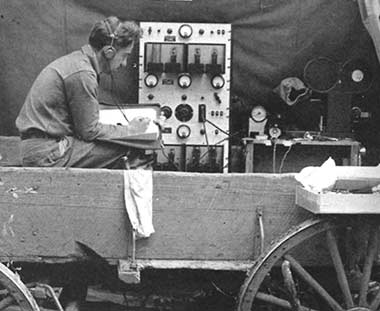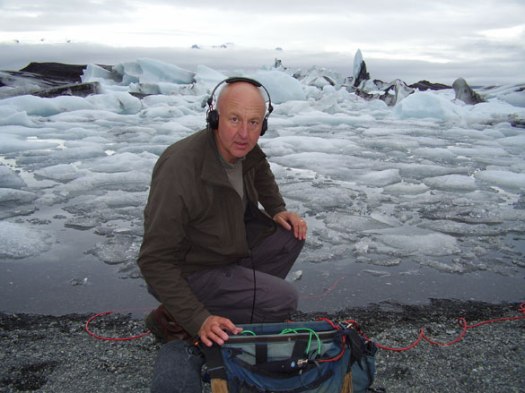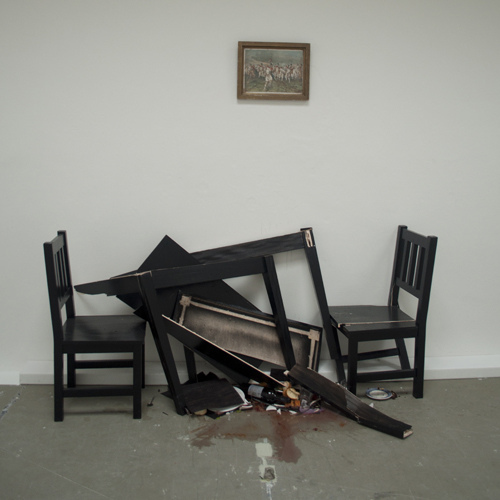 From 15th to 16th February, I attended In the Field, a symposium hosted by the British Library in collaboration with CRiSAP (Creative Research in Sound Arts Practice). Given the library’s own extensive collections of field recordings — ranging from oral history to ethnomusicological documents, from historical wildlife recordings to industrial sounds — it may just seem consequential for the British Library to adress contemporary practitioners of documentary recording. In fact, with its considerable line-up, In the Field truly aimed to further ›explore the art and craft of field recording‹: among others, speakers included Ximena Alarcón, Peter Cusack, Zoe Irvine, Christina Kubisch, Udo Noll, Salomé Voegelin, and Chris Watson.
From 15th to 16th February, I attended In the Field, a symposium hosted by the British Library in collaboration with CRiSAP (Creative Research in Sound Arts Practice). Given the library’s own extensive collections of field recordings — ranging from oral history to ethnomusicological documents, from historical wildlife recordings to industrial sounds — it may just seem consequential for the British Library to adress contemporary practitioners of documentary recording. In fact, with its considerable line-up, In the Field truly aimed to further ›explore the art and craft of field recording‹: among others, speakers included Ximena Alarcón, Peter Cusack, Zoe Irvine, Christina Kubisch, Udo Noll, Salomé Voegelin, and Chris Watson.
As a point of departure, it was Joeri Bruyninckx’ task to relate contemporary field recording practices to its historical origins: back to the days of wildlife recordists Ludwig Koch (UK) or Albert Brand (US), when field recording meant to bring a mobile studio into ›the relative wilderness of the field‹ (Bruyninckx) — occasionally even mounted on a horse carriage.
 Peter Kellogg from Albert Brand’s team recording in the swamps of Florida, 1936.
Peter Kellogg from Albert Brand’s team recording in the swamps of Florida, 1936.
Thanks to pioneers such as Ludwig Koch, it is now possible to listen to a compilation of African wildlife sounds from 1938. However, within a panel titled ›Origins of Field Recording‹ it would have been creditable to mention and indeed portray some other protagonists from the early days of field recording as well — e.g. ethnomusicologists such as Charles Seeger, John Lomax, or Colin Turnbull, or even some of the members of R. Murray Schafer’s World Soundscape Project such as Howard Broomfield, Bruce Davis, Peter Huse, or Hildegard Westerkamp.
The next two presentations already indicated the range of diverse perspectives on ›the field‹ to be expected at this symposium, changing over from Felicity Ford’s playful ›KNITSONIC‹ art project on wool to Simon Elliott, a professed sound-hunter with a favour for ›close calls‹, i.e. high-quality wildlife recordings without any disturbance, in close-up and ›as clean as possible‹ (Elliot). Listen to some of his excellent recordings at the blog section of wildlife-sound.org where he posts as ›osprey‹.
Fortunately, curators Cheryl Tipp and Angus Carlyle arranged for three extensive listening sessions, still an invaluable exception even at sound conferences and symposia. Listening session one showcased some of the treasures of the British Library’s collection of sound recordings.
Media artist Claudia Wegener, referring to herself as ›a migrant listener with a bag‹, presented some of her public radio projects and local collaborations in Kenya, Uganda, South Africa and other countries. Sharing her experiences from projects such as ›Listen! Babylon!‹, Radio Continental Drift or the Creative Africa Network, Wegener argued for the importance of African voices to be heard within a global sound art or field recordings discourse.
 Chris Watson in the field.
Chris Watson in the field.
Chris Watson remains an unchallenged, however unpretentious authority as a wildlife recordist and sound artist: so far, Watson published several solo albums of field recordings, his Weather Report (2003) included in The Guardian’s ›1000 Albums to Hear Before You Die‹ List. Chris Watson’s talk was as entertaining as it was encouraging: not only did he present some incredible recordings, and demonstrated the many uses of a wire coat hanger for field recording, he did also agitate for a true ›Public Life of Recording‹ (the title of panel 2): play a sound, tell a story, it is all about engaging people!
Media artist David Vélez, one of the editors of the Impulsive Habitat netlabel and chief editor of The Field Reporter, took the same line as Chris Watson, but he requested sound artists to do still more than a good recording: ›take notes, take photographs, do research!‹ This mixed-media approach — combining sound and sculpture — also characterized his most recent performance Deriva y catástrofe (2013), which he presented in a compelling video recording.
 Snapshot of Derive and catastrophe, a formidable performance by David Vélez.
Snapshot of Derive and catastrophe, a formidable performance by David Vélez.
Day one of In the Field ended with another listening session, curated by Mark Peter Wright. Titled ›Stretching the Field‹, this session followed up his promise, with field recordings ranging from Lee Patterson’s 2 Peanuts Burn (2009), Isobel Clouter’s and Rob Mullender’s Aosigetunoer Descent (2008) or Ian Burrows’ Fawn-Breasted Bowerbird (2006) — a Papua New Guinean bird meticulously mimicking builders and machinery — to Luc Messinezis‘ complex field recording SoundMark 030420103723 (2010) from Piraeus, Greece.
The report on day 2 of In the Field is soon to follow!
If you want to learn more about the symposium, don’t miss the detailed and aptly written report on day 1 and day 2 by Susanna Caprara (aka La Cosa Preziosa) or take a look at the reviews from Some Landscapes or The Domestic Soundscape. Very special thanks go to Udo Noll from radio aporee ::: maps for kindly inviting me to the symposium.

One Reply to “”